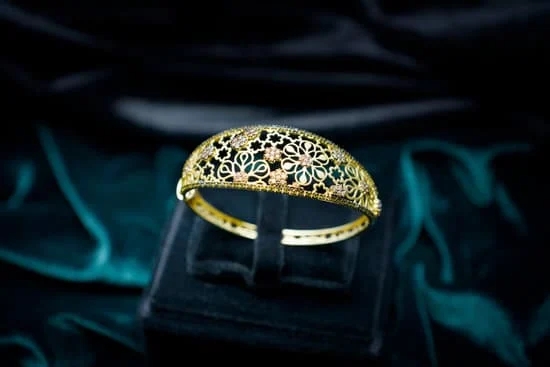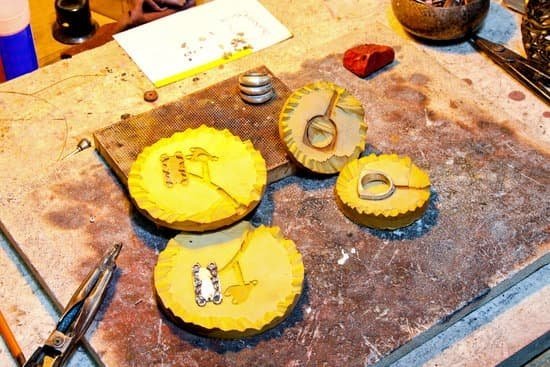Diamonds are often coveted for their dazzling beauty and ability to make a statement as jewelry pieces. However, diamonds have far more to offer than just their aesthetic appeal. These precious gems possess unique properties that make them highly versatile and valuable in numerous industries and applications.
From industrial use to advanced technology, diamonds have found their way into various sectors where their exceptional characteristics are harnessed for practical purposes. In this article, we will delve into the world of diamonds beyond jewelry and explore the fascinating ways in which they are utilized.
While it is no secret that diamonds adorn luxury accessories such as rings, necklaces, and earrings, it may come as a surprise to many that these gemstones have extensive industrial applications. Diamonds possess unparalleled hardness and thermal conductivity which makes them ideal for cutting, polishing, and grinding tools in industries including manufacturing, construction, and aerospace.
Their durability allows them to withstand intense pressures and temperatures required for precise cutting and shaping of materials like glass, metals, stones, and even concrete. Moreover, diamond-based cutting tools offer exceptional longevity due to their resistance against wear and abrasion.
In addition to their importance in industrial processes, diamonds also play a crucial role in advancing technologies such as electronics and scientific research. Diamonds possess superior heat dissipation properties, making them excellent heat sinks in electronic devices.
This means they can efficiently transfer heat away from sensitive components, prolonging the lifespan of these devices while enhancing their overall performance. Furthermore, diamonds find application in scientific research involving high-pressure experiments, laser technology advancements, and even serving as a substance for intense x-ray imaging.
The versatility of diamonds extends even further into fields like medicine and water purification. The precision and durability of diamonds make them invaluable assets in surgical tools such as scalpels and dental drills. With biocompatibility being an essential requirement for medical devices used inside the human body, diamonds prove to be an optimal choice due to their inert nature. Additionally, diamonds act as catalysts in water purification, effectively cleansing polluted water and making it safe for consumption.
It is evident that diamonds offer so much more than just being exquisite pieces of jewelry. Their unique properties and exceptional hardness have led to their incorporation into various industries and scientific breakthroughs.
From cutting tools to electronic devices, medical instruments, and even environmental conservation, the uses of diamonds continue to broaden our understanding of what these precious gems are truly capable of. In the following sections, we will explore each specific application in greater detail, shedding light on the pivotal role that diamonds play beyond the world of jewelry.
Industrial Applications
Diamonds may be renowned for their beauty and sparkle, but their usefulness extends far beyond jewelry. In fact, diamonds have proven to be an essential material in a wide range of industrial applications. From manufacturing to construction and even aerospace, diamonds play a crucial role in various industries due to their exceptional properties.
One of the key areas where diamonds are extensively used is in manufacturing processes. Diamonds are exceptionally hard, making them ideal for cutting, grinding, and shaping materials. In industries like gemology and construction, diamond cutting and polishing tools are relied upon for their precision and durability.
Diamond cutting blades are employed in saws to slice through tough materials such as glass, stones, metals, and even concrete. Drill bits with diamond tips are designed to bore into materials with ease and precision. Similarly, grinding wheels embedded with tiny diamonds are used to reshape and polish surfaces with exceptional efficiency.
In addition to manufacturing, diamonds also find applications in other industrial sectors such as construction and aerospace. Diamond-coated wires act as excellent cutting tools for concrete demolition or stone quarrying projects due to their ability to withstand immense pressure while maintaining sharpness.
Moreover, in aerospace engineering, diamonds contribute to the creation of sophisticated instruments that require extreme precision and durability. Their ability to withstand high temperatures makes them suitable for use in engines or specialized equipment where conventional materials would fail.
The versatility of diamonds as an industrial material is truly astonishing. From facilitating precise cuts in gemstone workshops to aiding in the construction of durable structures or propelling advancements in aerospace technology; diamonds continue to prove their indispensability across various industries.
Their hardness, strength, thermal conductivity make them invaluable assets for these applications. As we delve deeper into understanding the vast array of uses for this remarkable gemstone beyond its ornamental appeal, it becomes evident that diamonds truly are a marvel of nature with limitless potential.
Diamond Cutting and Polishing Tools
Diamond Cutting and Polishing Tools:
Diamonds are not only valued for their beauty but also for their exceptional hardness, which makes them ideal for cutting and polishing tools in various industries such as gemology and construction. Diamonds are the hardest naturally occurring substance on Earth, with a Mohs hardness scale rating of 10. This hardness allows diamonds to withstand extreme pressure and produce fine cuts and polished surfaces that other materials cannot achieve.
In the field of gemology, diamonds are used extensively for cutting and shaping precious gemstones. Gem cutters use diamond-tipped tools to shape rough gem crystals into beautifully faceted gems. The hardness of diamonds ensures that they can withstand the pressure required to grind away excess material from a stone, resulting in precise cuts with superb brilliance and sparkle.
In the construction industry, diamond saw blades are widely used for cutting concrete, bricks, tiles, and other hard materials. These saw blades consist of small industrial-grade diamonds embedded in a metal matrix. The diamond particles act as tiny cutting edges that wear away slowly as they cut through the material. Due to the hardness of diamonds, these saw blades can maintain their sharpness over an extended period of time, making them more cost-effective than traditional blades.
Additionally, diamond grinding wheels are employed in industries such as automotive manufacturing and glass production. These wheels are utilized for precision grinding operations on materials such as metals and glass. The extreme hardness of diamonds allows them to remove material rapidly while maintaining dimensional accuracy. Diamond grinding wheels ensure smooth finishes without causing excessive heat build-up or damage to the workpiece.
| Industry | Use |
|---|---|
| Gemology | Cutting and shaping gemstones |
| Construction | Cutting concrete, bricks, and tiles |
| Automotive manufacturing | Precision grinding operations on metals |
| Glass production | Precision grinding operations on glass |
High-Performance Cutting and Grinding
Diamonds are not only coveted for their beauty and sparkle in jewelry but also have a significant role in high-performance cutting and grinding tools. The exceptional hardness of diamonds makes them ideal for the manufacturing of saw blades, drilling bits, and grinding wheels that are used to cut and shape various materials such as glass, stones, metals, and even concrete. This section will explore the significance of diamonds in these essential tools.
Diamonds possess a remarkable hardness rating of 10 on the Mohs scale, which is the highest rating possible. This hardness allows diamonds to effectively cut through hard materials without easily wearing down or losing their sharpness. As a result, diamond cutting tools are widely used in industries such as construction, gemology, and manufacturing.
Saw blades embedded with small diamond particles or coated with a diamond abrasive edge are commonly used to saw through hard materials like stone and concrete. These diamond-tipped blades maintain their sharpness for much longer periods compared to traditional steel blades. Drill bits with diamond tips are also employed in various applications including drilling into masonry, ceramics, and hardened steel.
Grinding wheels made with industrial-grade diamonds are utilized for precision grinding tasks that require shaping or polishing hard materials like metals or glass. The hardness of the diamonds ensures that the grinding wheel maintains its effectiveness even after extended use.
In summary, diamonds play a crucial role in high-performance cutting and grinding tools due to their exceptional hardness. The use of diamond-tipped saw blades, drill bits, and grinding wheels enables efficient cutting and shaping of various materials across multiple industries. Diamond-based cutting tools not only enhance productivity but also offer extended longevity compared to traditional alternatives.
| Tool | Application |
|---|---|
| Diamond Saw Blades | Cutting through stone, concrete |
| Diamond-embedded Drill Bits | Drilling into masonry, ceramics, hardened steel |
| Diamond Grinding Wheels | Precision grinding of metals, glass |
Heat Dissipation in Electronics
Diamonds are not only valued for their brilliance and beauty but also for their exceptional thermal conductivity. This remarkable property has led to the use of diamonds as heat sinks in advanced electronic devices. Heat dissipation is a critical aspect of electronic devices as excessive heat can lead to reduced efficiency and even device failure. In this section, we will explore how diamonds are utilized in electronics to enhance their performance and prolong their lifespan.
One of the main advantages of using diamonds as heat sinks is their ability to conduct heat effectively. Diamonds have the highest thermal conductivity among all known materials, making them ideal for dissipating heat generated by electronic components such as CPUs, power amplifiers, and high-power lasers. When placed in contact with these components, diamonds quickly transfer the excess heat away from the device, preventing it from overheating.
To utilize diamonds as heat sinks, synthetic diamonds are often grown using chemical vapor deposition techniques. These artificial diamonds have similar thermal properties as natural diamonds but can be tailored to specific requirements and geometries. The diamond is typically shaped into a thin plate or layer that can be directly attached to the electronic component or integrated into the device’s structure.
The use of diamonds as heat sinks offers several benefits. Firstly, it increases the overall efficiency of electronic devices by keeping them within optimal temperature ranges. By reducing thermal resistance and preventing overheating, diamonds help maintain stable performance even under demanding conditions. Secondly, incorporating diamond-based technologies extends the lifespan of electronic devices by minimizing thermal stress and potential damage caused by excessive heat. As a result, devices equipped with diamond heat sinks are more reliable and durable.
Medical Applications
Diamond-Coated Instruments for Surgical Procedures
Diamonds have long been utilized in the field of medicine due to their remarkable properties, which make them ideal for surgical tools, scalpels, and dental drills. One key advantage of diamonds in medical applications is their exceptional hardness.
This quality allows diamond-coated instruments to maintain their sharpness for longer periods of time compared to traditional stainless steel tools. As a result, surgeons are able to perform more precise incisions and procedures, reducing the risk of complications and improving patient outcomes.
Moreover, diamonds also offer superior durability, allowing these instruments to withstand the rigors of repetitive use and sterilization processes without losing their cutting edge. Unlike conventional materials that may wear down or become dull over time, diamond-coated surgical instruments retain their effectiveness throughout numerous procedures. This durability not only enhances efficiency in the operating room but also reduces the frequency of instrument replacements, resulting in potential cost savings for healthcare facilities.
Bioinert Properties Benefit Biocompatibility
Another important aspect that makes diamonds particularly suitable for medical applications is their biocompatibility. The surface of a diamond is chemically inert, meaning it does not react with bodily fluids or tissues. This characteristic minimizes the risk of adverse reactions or infections during surgical procedures, making diamond-coated instruments a safe choice for use within the human body.
In addition to providing biocompatible surfaces, diamonds also have antibacterial properties. The surface structure inhibits microbial growth and attachment, making diamond-coated instruments less likely to be a source of contamination during surgeries. This attribute adds an extra layer of safety measures in infection control protocols in healthcare settings.
Advancements in Dental Technology
The dental industry has also embraced the use of diamonds in various forms such as diamond burs and drill bits. Diamond burs are abrasive tools used by dentists during procedures like cavity preparation and root canal treatments. The diamond coating allows these burs to grind and shape tooth material efficiently, resulting in less discomfort for patients and improved precision for dental practitioners.
Furthermore, diamond drill bits are widely utilized in implant dentistry. Their high cutting efficiency and precision enable dentists to perform accurate drilling to create spaces for dental implants. The durability of diamond-coated drills ensures a longer lifespan compared to traditional stainless steel counterparts, reducing the need for frequent replacements and minimizing procedure time.
Scientific Research
Diamonds, with their exceptional properties, have found significant applications in the field of scientific research. Their strength and durability make them ideal for use in high-pressure experiments, where extreme conditions are created to study various materials and phenomena. In these experiments, diamonds are often used as anvils to generate pressure that can reach millions of times the atmospheric pressure. The hardness of diamonds allows them to withstand these extreme conditions without undergoing any structural changes.
Furthermore, diamonds have become indispensable in laser technology. They are used as optical windows, lenses, and even as gain media in lasers due to their excellent thermal conductivity and transparency over a wide range of wavelengths. The high thermal conductivity of diamonds allows for efficient heat dissipation from the optical components within the laser system, ensuring stable performance and preventing damage from overheating.
In addition to high-pressure experiments and laser technology, diamonds have also revolutionized x-ray imaging in the field of scientific research. Diamonds can act as a source of intense x-rays when subjected to a specific type of radiation called electron beams. These intense x-rays are then used for various applications such as studying crystal structures at atomic levels and probing the behavior of materials under extreme conditions.
The versatility of diamonds in scientific research continues to expand as new applications are discovered. From facilitating high-pressure experiments to enabling advanced laser systems and providing intense x-ray imaging capabilities, diamonds play an essential role in pushing the boundaries of scientific understanding. Their unique properties make them invaluable tools for researchers across various disciplines, contributing to advancements in fields ranging from materials science to physics and beyond.
Water Purification
Diamonds, renowned for their beauty and value, have a surprising application that extends far beyond their use in jewelry. One of the lesser-known uses of diamonds is in the field of water purification. This section will explore how diamonds act as catalysts to remove impurities from polluted water, making it safe for consumption.
Diamond Electrodes for Water Treatment
Diamonds possess unique electrical properties that make them highly effective in water treatment processes. Researchers have discovered that when diamond electrodes are applied, they can generate an electrochemical reaction that breaks down organic contaminants present in water. This process, known as electrochemical oxidation, involves the oxidation of organic compounds into harmless byproducts through the use of an electric current. The exceptional hardness and stability of diamond electrodes make them ideal for long-term use in water treatment systems.
Catalytic Properties of Diamonds
Diamonds also exhibit excellent catalytic properties that aid in purifying water. By coating the surface of a diamond with specific catalysts such as platinum or iridium, chemical reactions can be accelerated, leading to more efficient removal of pollutants. The large surface area provided by diamond particles allows for greater contact between the catalyst and contaminants, leading to better results in water purification processes.
Applications and Advantages
The use of diamonds in water purification has numerous applications, particularly in treating industrial wastewater and contaminated drinking water sources. Diamonds can effectively remove a wide range of pollutants including organic compounds, heavy metals, and even certain pathogens. Additionally, using diamonds as catalysts offers several advantages over conventional methods such as activated carbon filtration or chemical treatments. These include higher efficiency rates, lower energy requirements, and reduced waste generation.
Conclusion
In conclusion, diamonds are truly remarkable gemstones with an array of uses beyond the world of jewelry. From their widespread use in various industries to their significance in scientific research, diamonds have proven to be invaluable in advancing technology and innovation.
Industrial applications of diamonds include their use in manufacturing, construction, and aerospace industries. With their exceptional hardness, diamonds make ideal cutting and polishing tools for industries like gemology and construction. They are used in the production of saw blades, drilling bits, and grinding wheels for cutting and shaping materials such as glass, stones, metals, and even concrete. This versatility allows for efficient and precise work across different fields.
Furthermore, diamonds play a crucial role in advanced electronic devices by dissipating heat as heat sinks. This not only prolongs the lifespan of these devices but also enhances their efficiency. In the medical field, diamonds are utilized in surgical tools, scalpels, and dental drills due to their precision, durability, and biocompatibility. Their use ensures accuracy during procedures while also maintaining a sterile environment.
In scientific research, diamonds find application in high-pressure experiments, laser technology, and even intense x-ray imaging. These areas benefit greatly from the unique properties of diamonds such as their ability to withstand extreme conditions or produce intense light beams. Additionally, diamonds act as catalysts in water purification processes by cleansing polluted water and making it safe for consumption.
Overall, the diverse uses of diamonds beyond jewelry highlight their indispensable role in various industries and scientific advancements. Their hardness, durability, precision capabilities coupled with unique properties have made them invaluable resources for technology development and innovation. As we continue to explore the potential of this fascinating gemstone further who knows what other surprising applications may emerge in the future.
Frequently Asked Questions
What other things are diamonds used for?
Diamonds are not solely used for jewelry and adornment purposes. In fact, these exquisite gemstones have a wide range of practical applications in various industries. One significant use of diamonds is in cutting, grinding, and polishing tools.
Due to their exceptional hardness, diamonds are employed as abrasive materials to shape and refine hard substances like metals, concrete, and glass. Additionally, diamonds find utility in industrial drills and saws where their strength allows them to efficiently cut through tough materials. Furthermore, diamonds are also used in high-performance electronics, such as semiconductors and high-power lasers, due to their superior thermal conductivity.
How are diamonds used in real life?
Diamonds have numerous applications in real life beyond their symbolic value or investment potential. For instance, diamond coatings are utilized on different surfaces to enhance durability and resistance against wear and tear. These coatings can be found on tools like drill bits or even on car mechanical parts like engine components for improved performance and extended lifespan.
Moreover, diamonds play a critical role in scientific research and technology development by acting as windows for high-pressure experiments or detectors for radiation. Their unique properties make them indispensable in various industries ranging from healthcare (use in surgical scalpels) to telecommunication (as essential components for transmitting light signals).
How are diamonds most commonly used?
The most common use of diamonds is undoubtedly related to jewelry manufacturing. Diamonds’ rarity coupled with their extraordinary beauty makes them highly sought after as gemstones for engagement rings, necklaces, earrings, bracelets, watches, and more. Jewelry crafted with diamonds often serves as symbols of love, status or milestones in people’s lives such as anniversaries or birthdays.
This traditional usage has made diamonds synonymous with luxury and elegance over the centuries. While the fashion industry predominantly drives the demand for diamond jewelry today, it’s important to acknowledge that this precious stone has multifaceted uses beyond its ornamental appeal.

Welcome to my jewelry blog! My name is Sarah and I am the owner of this blog.
I love making jewelry and sharing my creations with others.
So whether you’re someone who loves wearing jewelry yourself or simply enjoys learning about it, be sure to check out my blog for insightful posts on everything related to this exciting topic!





